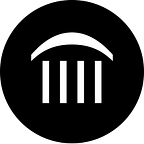Mark Mothersbaugh creates postcard-sized drawings and collages on a daily basis. He makes prints by manipulating found photographs. He makes sculptures. He produces books that have included his own writing and illustrations. He has composed music for movies, television shows, and video games. He even designed a line of eyeglasses. Yet he is known around the world for one single art project, the post-punk band DEVO. Mothersbaugh’s book, Mark Mothersbaugh: Myopia, edited by Adam Lerner, highlights the full range of Mothersbaugh’s creative spectrum, from colorful rugs to photographic mutants to ceramic roli polis. The following is a little about Mothersbaugh’s early art in his own words.
Kent State was an amazing situation for me. All of a sudden there were all sorts of people wearing all kinds of clothes, and they weren’t getting sent home or spanked or stabbed with forks or punched or having their hair cut off by other students.
I got into printmaking accidentally in an introductory course in my first semester at school, and I fell totally in love with it. At first I loved everything. I loved stone lithography, still photography, and copperplate etchings. But silk-screen printing became my preferred style. It was the times: Andy Warhol did it.
My teachers said that I could use the printmaking studio at night as long as I cleaned up after myself. So I would go in at night, and I would burn all the screens for a piece of artwork over the course of an evening. I would make prints of things like a grid of cows. The first color would be drying while I started the next one, so I could clean up and go to the next screen and put out a whole piece of art overnight.
My printmaking teacher Ian Short was very encouraging. He was definitely a mentor for me, though he was probably thinking, “This kid isn’t even old enough to be a grad student, but he spends all day and night in the studio.” He would arrive in the morning, wake me up, and I’d go off to English class. By my sophomore year, Jerry [Gerald Casale] helped me enroll in graduate-level art classes.
I bought these medical books at a bookstore when I was looking
for imagery. I thought, “Maybe I could be a punk doctor,” because it is so expensive to get medical treatment. I thought that delivering a baby didn’t look too hard. Taking out an appendix looked harder, but as long
as I could sew things up right and know what I was looking for, I could save my friends’ lives and save them a lot of money. I had a friend who went into debt because he had a $700 hospital bill for getting his appendix out. He said, “I make $50 a week and my rent is $150 a month. I’m never going to be able to pay that off.” I was looking at these medical books, and I thought I could probably do the work. I was still trying to stay in school and writing music to pay my rent. I did this crazy body of really angry, distorted stuff.
Mark Mothersbaugh: Myopia, edited by Adam Lerner, is available from:
PAPress.com
Amazon
Barnes & Noble
Your local bookshop
Adam Lerner is the Director and Chief Animator of the Museum of Contemporary Art Denver
